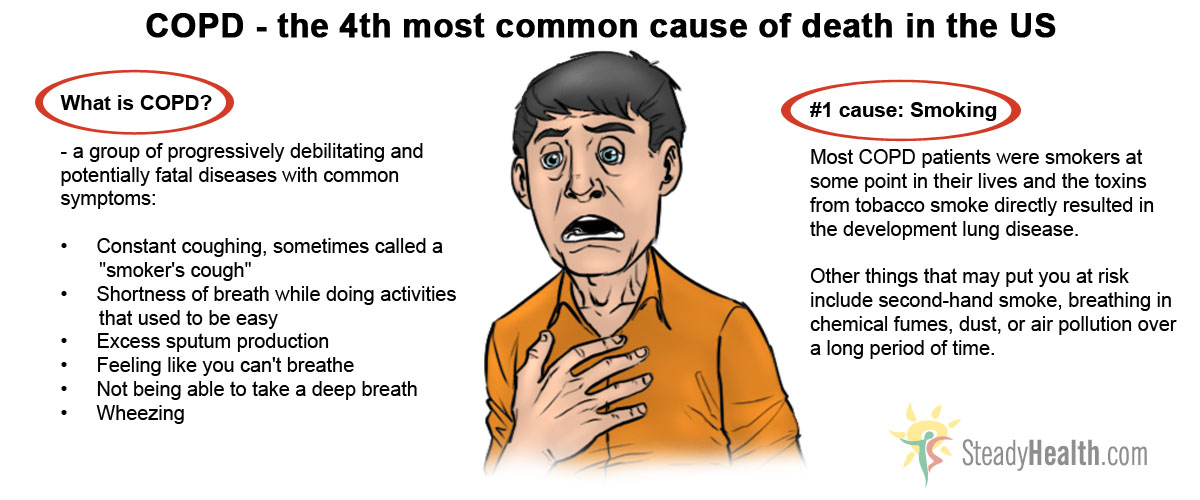Table of Contents
What is COPD?
Despite the name, Chronic Obstructive Pulmonary Disease (COPD) is not a single disease. It's actually a group of progressively debilitating and potentially fatal diseases with common symptoms.
To put it simply, they make it hard to breathe. And when it's always hard to breathe, it can be hard to live your life to the fullest. Or even to live at all.
How do you get COPD?
Well, there are a few causes, but the absolute number one cause of chronic obstructive pulmonary disease is smoking.
There are some unfortunate patients who never smoked themselves, but lived or worked in smoke-filled environments and wound up with lungs damaged by secondhand smoke. Most of these people, both the smokers and those exposed to secondhand smoke, are usually diagnosed with COPD in their 50s or 60s. There is an even smaller subset of the population, though, that genetically lacks an enzyme named alpha-1 antitrypsin. This deficiency causes them to develop COPD, among other chronic conditions, usually in their 40s.
What is the difference between the types of COPD?
Emphysema, from the Greek word emphysan, which means 'to inflate,' is trapped air or gas. The tiny chambers of the lungs, the alveoli, are destroyed. These spaces are the primary locations where gas exchange takes place.
Take a deep breath. You have to work to bring air into your lungs, but when you stop making an effort the natural elasticity of your lungs causes them to contract and push the air back out. Think of how much harder it is to blow up a balloon than it is to let all of the air escape. The elasticity of the balloon forces the air out easily while the balloon contracts in size, just like your lungs. Emphysema takes that natural elasticity away. You have to work to get the air out as well. When it takes twice as much effort to breathe as normal (or more), there are serious, debilitating effects on your overall health.
Read More: Is There A Natural "Cure" For COPD?
Chronic Bronchitis, however, is not so much lung destruction as lung blockage. In order to be diagnosed, a person has to have a productive cough for at least three months in two consecutive years. That's at least six months of coughing up the overabundance of mucus being produced by the tracheobronchial tree. The tracheobronchial tree is the structure that the encompasses all of the airways of the lungs. With all of that mucus in the way, it's extremely difficult to get enough air into the lungs and enough carbon dioxide out of them. Chronic bronchitis sufferers are almost drowning in their own secretions.
- Chronic obstructive pulmonary disease. (2001). In Taber's Cyclopedic Medical Dictionary (pp.584-585, Edition 19). Philadelphia, PA: F. A. Davis Company.
- Emphysema. (2001). In Taber's Cyclopedic Medical Dictionary (pp.663-664, Edition 19). Philadelphia, PA: F. A. Davis Company.
- Bronchitis, chronic. (2001). In Taber's Cyclopedic Medical Dictionary (pp.286-287, Edition 19). Philadelphia, PA: F. A. Davis Company.
- Mindmap by steadyhealth.com
- Photo courtesy of MilitaryHealth by Flickr : www.flickr.com/photos/militaryhealth/8652395915/


